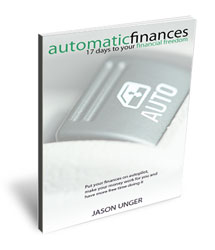
Michael Lewis is back with another book on Wall Street just four years after The Big Short, his last book on the abuses of Wall Street. Flash Boys tells the story of new abuses and how and why the old stock market has disappeared.
Back in 2002 eighty-five percent of stock trades traded on the New York Exchange with a person who processed the order. Other stocks traded at Nasdaq; no stocks traded at both. Then in 2005 the Securities and Exchange Commission responded to complaints of cronyism by allowing entry of new stock exchanges that could be corporations run for profit rather than just a club run like a public utility. Exchanges multiplied. By 2008 there were thirteen mostly in northern New Jersey: BATS, Direct Edge, Nasdaq BX, Citadel, Getco and others. The new exchanges employed programmers to program a “matching engine” for a room full of computer servers that do “electronic trading.”
Lewis tells the story of the use and abuse of electronic trading with a large caste of characters, one, the star of the show, a dozen other main characters and additional supporting characters. They are variously Canadians, Russians, Asians and some Americans. We meet the star in chapter two. He is Brad Katsuyama, a Canadian of Asian descent, who works in New York for the Royal Bank of Canada.
Katsuyama traded stocks on the New York Exchange for several years until his bosses in Canada decided their New York office should get into the new trend of electronic trading. Since they did not know how to do it, they bought an American company that did: Carlin Financial. The Carlin Financial boss turned out to be a loud and obnoxious American who walked about the office wielding a baseball bat. The new boss did not explain electronic trading but announced loudly, “It’s all about speed.”
The education of Katsuyama started when he tried to sell a million shares of a stock listed for bid on his computer screen at a price of $3.70 a share. When he clicked to sell, the offer disappeared to be replaced with a much smaller offer at a much lower price.
The plot thickens; there is mystery as well as outrage. Katsuyama begins an investigation. He calls in tech support. He says, Watch, closely.” There were a total of one hundred thousand shares of Amgen offered at $48 a share on four exchanges. He clicked to buy them all, but again, the offers disappeared and the price jumped higher. Tech support says “Wow,” but no answers.
In the old days specialist traders in one or a few stocks took customer orders with conditions or limits: sell if the stock goes up to $10 or buy if it goes down to $5. A specialist trader reading over his or her list of orders could make millions if they were allowed to front-run the market and trade for themselves. Stock market rules prohibited the practice, back then. Fast forward to a computer age and a few rule changes and the new results sound very much like the computer assisted same thing, except that multiple exchanges and universal access to computers make it necessary to have faster computers than the competition.
The Carlin financial operation was losing millions for the Royal Bank of Canada and Katsuyama begins to suspect their computers are a few micro seconds too slow to keep up with competitors. His bosses fire the Carlin Financial guy and put him in place to run electronic operations. From there the story moves along as he finds new people with various skills and experience who can turn the operation around.
His first hire is an acquaintance and former Royal Bank of Canada employee, a computer guy who can write computer code and talk to humans. Then there is the hardware guy and others with specialty skills and experience. Readers get a little bio-material about them all and should not be surprised to find them quirky and eccentric, but they do turn the operation around. Generally though they feel dissatisfied just coping; Katsuyama decides to leave his job and start his own exchange with an eye to defeating the abuses they now know so well. The rest of the story follows these efforts.
High frequency trading makes two transactions out of what should be one. When a client wants to buy a stock, the high frequency trader’s computer can find all the other offers to sell in a few milliseconds. If the computer bought the stock at the lowest price on behalf of their client, that would be one transaction. If instead the high frequency trader’s computer buys the stock for the firm and then sells it to the client, two transactions take place. As Lewis explains “In buying from every seller and selling to every buyer, it [high frequency trading] winds up: a) doubling the trades in the marketplace and b) being exactly 50 percent of the booming volume. It adds nothing to the market but at the same time might be mistaken for the central player in that market.”
In the earlier housing collapse Wall Street bought home mortgages and repackaged them into Collateral Debt Obligation bonds to resell to others, or they generated profits by inventing transactions. With High Frequency Trading Wall Street uses computer technology to get between a buyer and seller, or they generate profits by inventing transactions.
Lewis branches into several sub plots at various points in the story. The need for speed obsesses everyone in high frequency trading with hilarious results. Even though a computer signal can go from Chicago to New York and back in twelve milliseconds, a broker closer to the computer doing the trade can front run other orders farther away. Having the latest hardware and locating it in the best place is the newest problem in stocks; some argued over which side of a room their server should be.
The trials and troubles of Russian programmer, Sergey Aleynikow, made grist for another sub plot. Sergey wrote computer code for the Goldman-Sachs high frequency trading operation. He downloaded lots of open source code to reuse and adapt, but his bosses told him everything he did was their property. After he emailed some of the code to himself, Goldman-Sachs complained to the FBI. They arrested him and he was later convicted of stealing proprietary material. He served time, was released on appeal, re-arrested by the state of New York on the same charge, then denied bail as a flight risk and on and on.
The book has the plot, characters and theme I expect to find in a short story or novella. There is no index or references to other works or web sites. There is no research, nor really any argument to follow. The book is based entirely on interviews and some explanation as necessary. The book comes to an end without resolving anything, except like good fiction there is a theme: Wall Street, a bunch of self-serving pickpockets.
 About the author: Fred Siegmund covers America's jobs as part of work doing labor market analysis and projections for a client base of recruiters, trainers and counselors. Visit him at www.americanjobmarket.blogspot.com
About the author: Fred Siegmund covers America's jobs as part of work doing labor market analysis and projections for a client base of recruiters, trainers and counselors. Visit him at www.americanjobmarket.blogspot.com



